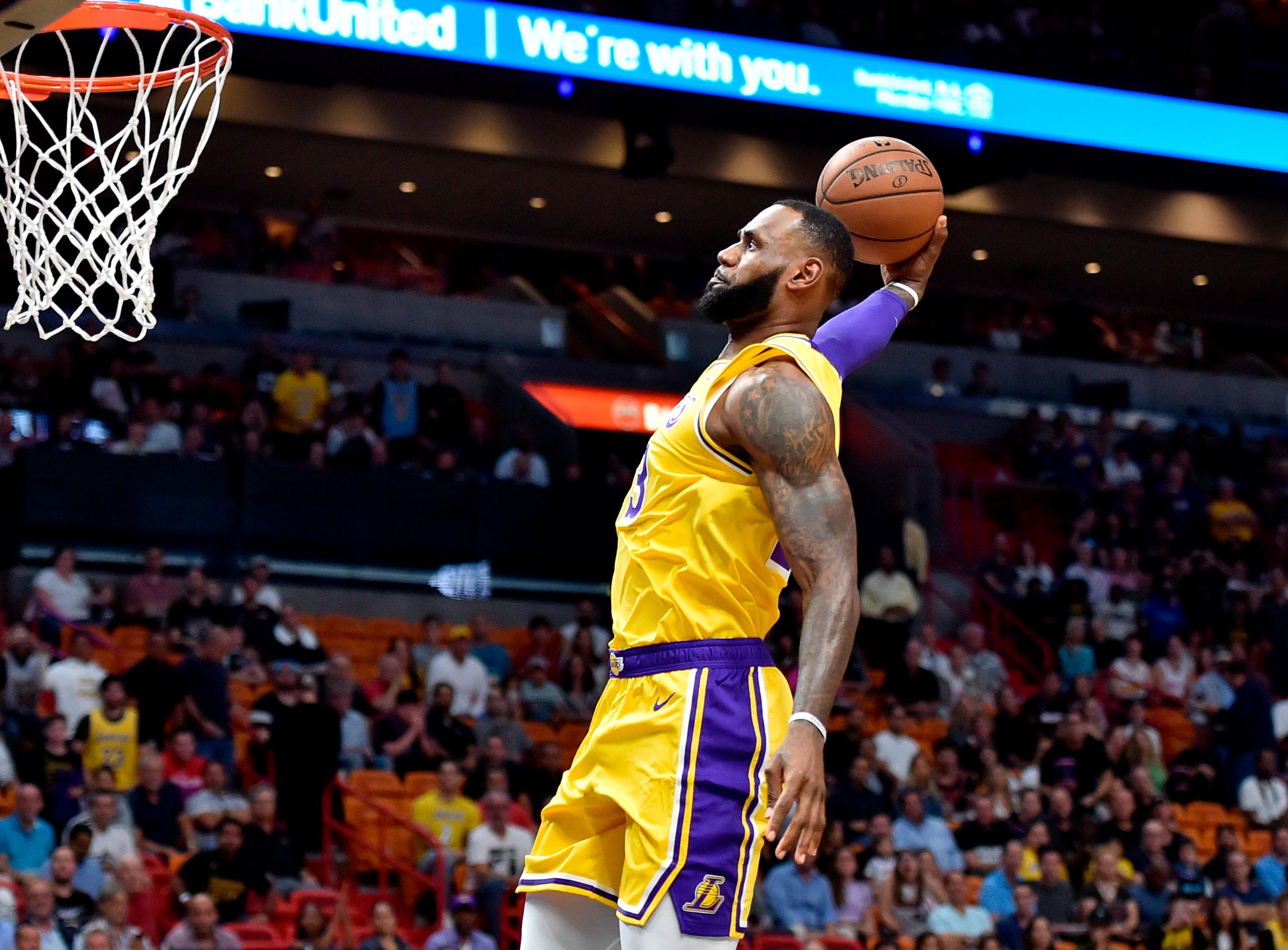
It is no longer notable when LeBron James returns to play in Miami. Too much time has passed since he left the Heat in 2014, and too many players have come and gone; LeBron himself is already on his second team and beginning yet another chapter of his career. So on Sunday night, LeBron created his own story line. James, in his 16th game as a Laker, finished with 51 points in 38 minutes on 19-of-31 shooting from the field and 6-of-8 from 3 to lift Los Angeles to a 113–97 win. It was the second game of a back-to-back.
To call the performance “vintage LeBron” would be to assume that current LeBron isn’t as good as the one before. His prime years have become difficult to define, because he keeps getting better with age (at least offensively). Last season, at 33, James played in all 82 games for the first time in his career and nearly averaged a triple-double. His consistency, and longevity, are becoming as impressive as anything he’s accomplished in a single season. Look at what he’s doing about a month from birthday no. 34:
Or this:
Or this:
(Jamal Murray, take note: If you’re going to take a meaningless shot at the buzzer to hit 50, you’d better make it.)
It’s hard to say that James is “back,” per se. He coasted through his first month in Los Angeles, shooting a paltry 27.3 percent from deep and missing crunch-time free throws. James’s cruise control is better than most players’ top end — he averaged 26 points, eight rebounds, and seven assists through his first 13 games of the season. But it wasn’t enough — thanks to suspensions and a bad defense, the Lakers started 2–5. LeBron has turned it up since; he’s averaging 29.7 points a game and shooting over 50 percent from 3 in the past nine games. L.A. is now 9–7 and in seventh place in the West.
Sunday’s 51-point display was the culmination of a particularly good week (ignoring the Lakers’ 130–117 loss to the Orlando Magic on Saturday). On Wednesday night against the Portland Trail Blazers, James put up 44 points (then a season high) and surpassed Wilt Chamberlain for fifth on the all-time scoring list. More importantly, the Lakers got a much-needed win over a Blazers team that now sits atop the West. It took less than a week for LeBron to one-up his best game as a Laker: Sunday’s performance is only the second time James has broken the 50-point barrier in the past five seasons, and only the 10th time in his career.
James’s exploding for this many points this early in the season added some intrigue to a mundane Sunday-night slate, but it also underlined the Lakers’ dilemma this season. They need their young core to step up, either to give James a roster that can carry him into his golden years or to increase certain players’ trade value. But the fact that James has had to flip his switch before December to keep them afloat is troubling.
Sixteen games in, the role of LeBron’s second fiddle is still vacant. Among two-man combinations featuring James and one of the Lakers’ young core players, only Josh Hart has a positive net rating (7.4); Kyle Kuzma (minus-0.5), Brandon Ingram (minus-1.5), and Lonzo Ball (minus-1.9) are all in the red. JaVale McGee has been essential because he’s one of the few players who can put up a fight on defense. Kentavious Caldwell-Pope’s 19 points off the bench Sunday were a welcome sight, but otherwise this season he has averaged a career-low 7.1 points. Anytime LeBron isn’t on the floor, the Lakers struggle to score, let alone get into a rhythm. On Sunday, they held a 16-point lead going into the fourth quarter. But they let another late lead slip into single digits, and LeBron helped close it out by playing the final eight minutes.
That’s the rub of this Lakers season: James’s highlights are both a demonstration of his brilliance and an indictment of his new teammates’ lack of highlights — or even simply consistency. The good news is the Lakers have shown they can be competitive as long as LeBron is active. But as we creep toward the quarter mark of his first season in Los Angeles, it remains to be seen who will be joining him.